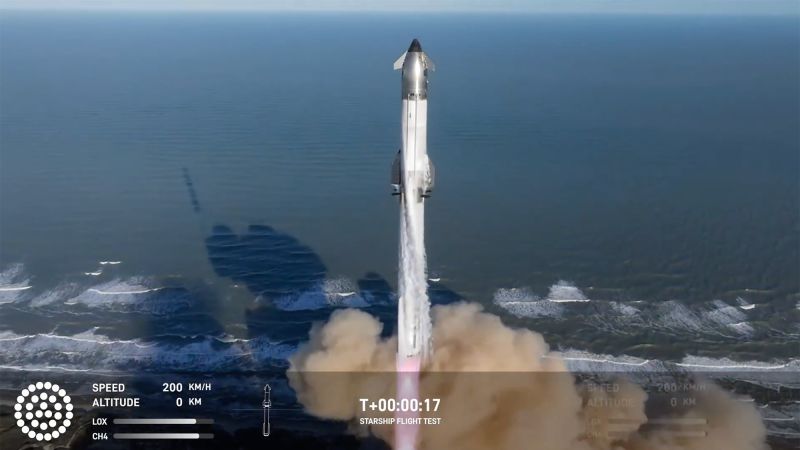SpaceX has made headlines once again with its innovative Starship launch system. The company conducted the seventh uncrewed test flight of its Starship on a Thursday, showcasing not only the advanced technologies behind the spacecraft but also the ambitious nature of the mission itself. This flight marked a significant milestone in SpaceX’s efforts to create a fully reusable vehicle capable of carrying humans and cargo beyond Earth, a vision that captures the imagination of many around the globe.
At 5:37 p.m. ET, the gigantic Starship took to the skies, perched atop its Super Heavy rocket booster at the SpaceX launch site, known as Starbase, located near Brownsville, Texas. The launch sent a powerful sound reverberating through the area as the 33 Raptor engines roared to life, igniting an intense excitement among engineers, viewers, and enthusiasts alike. Notably, this test flight employed a unique engine—one that had previously been used during its fifth test flight back in October 2024, marking the first reuse of a Raptor engine in this context.
However, despite the successful recovery of the booster, the spacecraft’s journey took a turn for the worse approximately 8.5 minutes into the flight when telemetry signals ceased, indicating that the Starship itself had been lost. SpaceX attributed this incident to what they refer to as a “rapid unscheduled disassembly,” commonly abbreviated as RUD, essentially implying that the vehicle experienced an explosive failure during its ascent burn. Following the launch, SpaceX posted on X (formerly Twitter), expressing that their teams would meticulously analyze the flight data in an effort to uncover the root cause of the failure, emphasizing that the learning gained from such test flights is invaluable to improving the system’s reliability.
The Super Heavy booster executed its landing flawlessly back at the launch site. This marked SpaceX’s second successful recovery of a Super Heavy booster after a launch. Following its separation from Starship, the booster was gently guided back to the launch tower known as “Mechazilla,” a nickname given to the structure designed to catch rocket parts as they return to Earth. This part of the mission produced a dramatic sonic boom, echoing across the vicinity, notably near the popular tourist destination of South Padre Island.
The purpose of the Starship test flight was multifaceted. Aside from the operational evaluations pertaining to the booster’s retrieval, SpaceX aimed to assess the spacecraft’s ability to deploy coordinates, with onboard dummy payloads mirroring the specifications of forthcoming Starlink satellites. A crucial phase was set to occur approximately 17 minutes into the mission when the mock satellites were intended to be released, though neither the Starship nor the payloads were expected to reach orbit; instead, they would follow a suborbital trajectory leading to their disposal in the ocean.
Among the significant upgrades featured in this new generation of Starship were enhancements that allowed for greater fuel capacity, improved flight computer systems, and new antennas aimed at better connectivity with SpaceX’s Starlink network. These advancements highlight SpaceX’s commitment to refining its spacecraft technology while pushing the boundaries of what’s possible in space travel.
As the team prepares to investigate the outlined challenges and failure during the flight, SpaceX’s leadership remains optimistic. SpaceX spokesperson Dan Huot noted that it will require time and thorough analysis to distill exact information regarding the mission failure. He stressed the experimental nature of the Starship program, underlining SpaceX’s focus on learning from every launch as they prepare for further attempts aimed at advancing space exploration technology.
In summary, while the seventh test flight of the SpaceX Starship program highlighted significant successes, particularly with their booster recovery, it also served as a reminder of the challenges inherent in pioneering aerospace technology. The journey of Starship continues, driven by ambition, innovation, and an unwavering pursuit of knowledge, which is crucial in creating a robust, reliable space travel system for future missions.



